Poll: Trump and the Economy
A 53 percent majority disapproves of President Trump’s handling of his job as president and of his handling of the economy. Both Trump’s job and economic approval are up slightly since Navigator’s June survey.
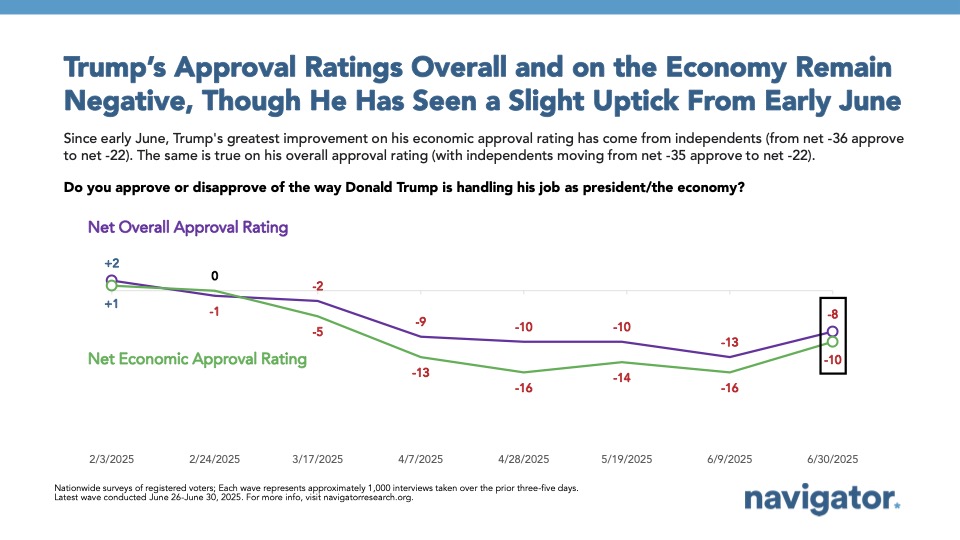
Trump’s ratings are most negative on inflation, tariffs, and health care:
- 58 percent of Americans disapprove of the way President Trump is handling inflation and the cost of living.
- 56 percent of Americans disapprove of the way President Trump is handling tariffs.
- 51 percent of Americans disapprove of the way President Trump is handling health care.
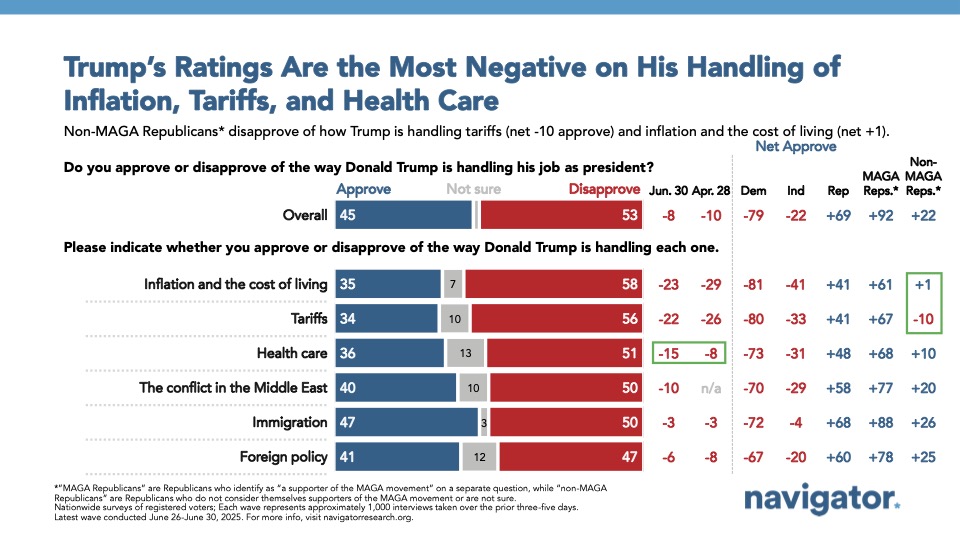
Economic sentiment also remains deeply pessimistic, but has improved mildly. This is primarily driven by Republicans, but also some independents.
- 64 percent of Americans rate the state of the U.S. economy negatively, including 70 percent of independents.
- Half of Americans say the economy is getting worse, including 55 percent of independents.
- 53 percent of Americans say they feel uneasy about their own financial situation over the next few months, including 60 percent of independents.
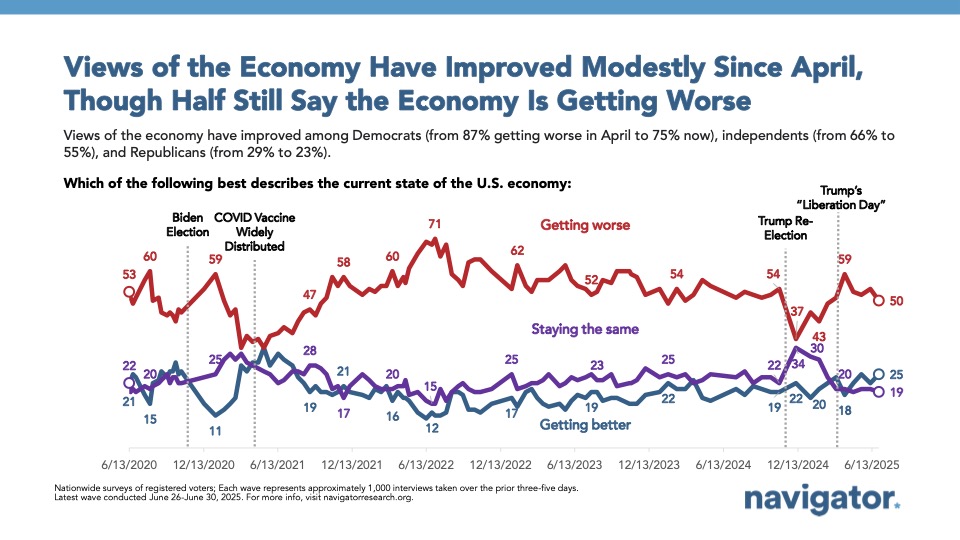
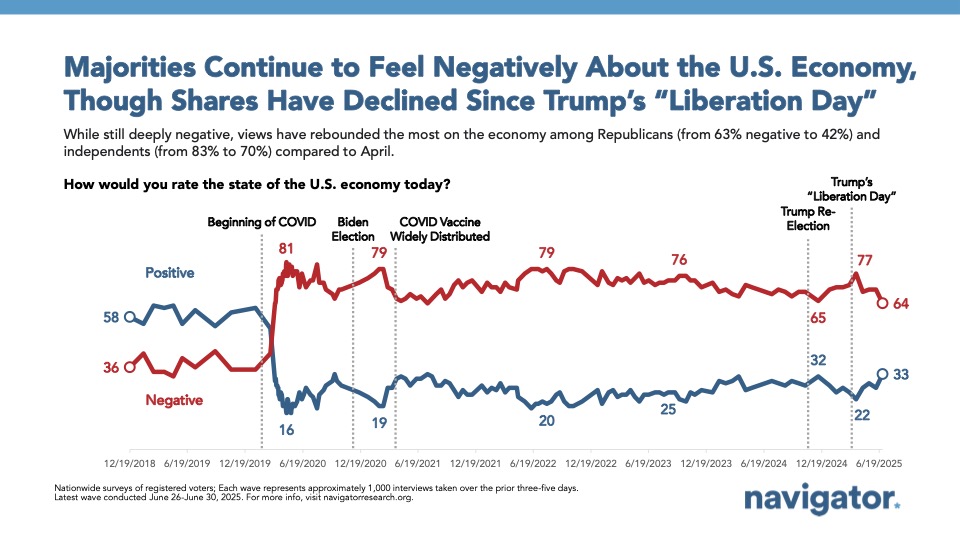
Americans remain hyper-focused on the economy but believe President Trump and Republicans in Congress are mostly focused on immigration and the Middle East, which are comparatively low priorities for Americans.
- Americans say that inflation and the cost of living (56 percent), jobs and the economy (43 percent), and Social Security and Medicare (40 percent) are the top issues that the President and Congress should be focused on.
- Americans see Donald Trump and Republicans in Congress as focused on immigration and the border (70 percent) and the conflict in the Middle East (42 percent).
- Although around half of Americans approve of the job Donald Trump is doing on immigration (47 percent), it is a top-five priority for only a third of Americans (32 percent).
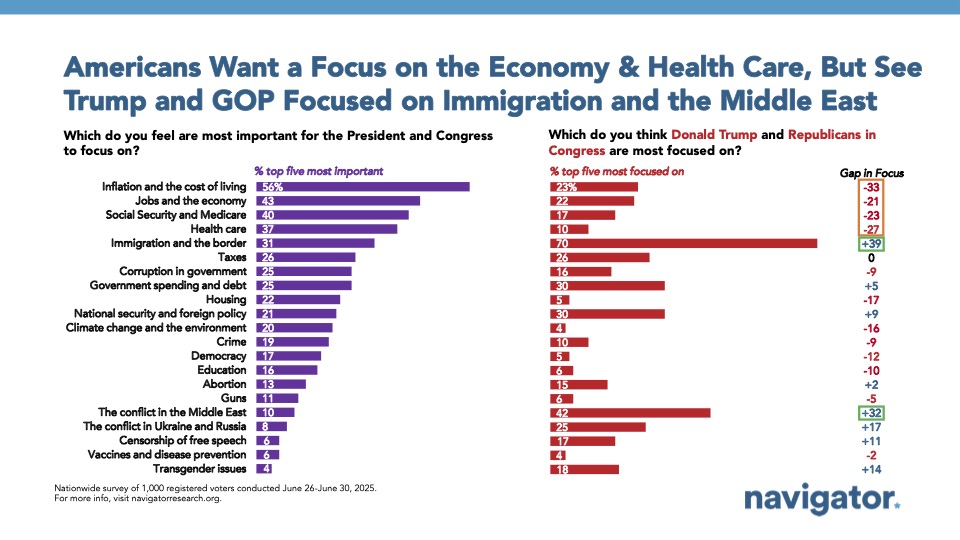
About The Study
Global Strategy Group conducted a public opinion survey among a sample of 1,000 registered voters from June 26-June 30, 2025. 100 additional interviews were conducted among Hispanic voters. 75 additional interviews were conducted among Asian American and Pacific Islander voters. 100 additional interviews were conducted among African American voters. 100 additional interviews were conducted among independent voters. The survey was conducted online, recruiting respondents from an opt-in online panel vendor. Respondents were verified against a voter file and special care was taken to ensure the demographic composition of our sample matched that of the national registered voter population across a variety of demographic variables. The margin of error for the full sample at the 95 percent level of confidence is +/- 3.1 percentage points. The margin of error for subgroups varies and is higher.




